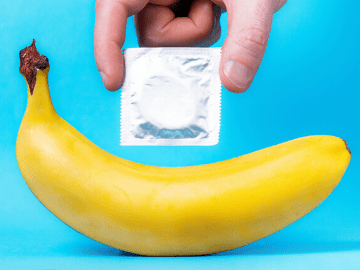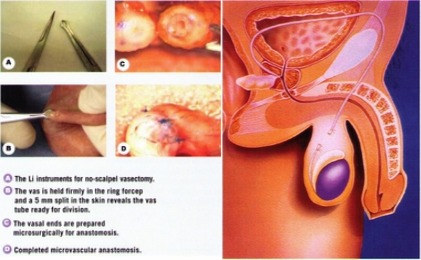Doctor Katelaris is a highly regarded urological surgeon who performs vasectomies at the Sydney Adventist Hospital in Wahroonga and in the Urology Outpatient Clinic in Hornsby.
Vasectomy Reversal
Katelaris Urology clinic provides vasectomy reversal surgery/vasovasostomy in Sydney under the supervision of a specialist surgeon. Get in touch with the vasectomy reversal clinic today to book your consultation.
Vasectomy reversal procedure – A Gentle Approach
Vasectomy reversal, or vasovasostomy, is a procedure undertaken to reconnect the vas deferens that were formally divided during a vasectomy surgery. This operation allows the sperm to re-enter the ejaculate like it would have prior to the patient’s vasectomy, and aims to restore male fertility.
Before proceeding with vasectomy reversal surgery, the patient and their partner should be evaluated for possible causes of post-surgical infertility. The male patient will have their medical history taken, undergo a physical examination and have their lower urinary tract checked for any benign or malignant growths. The patient’s partner should be assessed by a female fertility specialist.
Before reattachment of the vas deferens in the procedure, seminal fluid is retrieved and examined for the presence of sperm. Sperm may not be immediately present under a microscope; however, a copious amount of clear discharge is a good prognostic sign and indicates a greater chance of long-term restoration of fertility.
Post-operatively, patients should keep the scrotum well supported, and abstain from vigorous physical activity and sexual intercourse for approximately 6 weeks. The first post-operative sperm count is performed at 6 weeks and then every three months for up to two years after surgery.
Types of vasectomy reversal
There are two types of vasectomy reversal surgery techniques available to your surgeon, depending on the condition of your seminal fluid during operation. The surgeon will examine the fluid inside the vas deferens while the patient is on the operating table and make a decision from there.
1. Vasovasostomy (1), which involves reconnecting the two previously cut and sealed ends of the vas deferens.
This vasectomy reversal surgery is performed under general anesthetic through two small incisions in the scrotum. The two ends of the cut vas deferens are identified and prepared for reattachment. The vas deferens are sewn together using small, fine sutures and a semen test is performed post-operatively to determine the success of the procedure.
2. Vasoepididymostomy is an alternate form of vasectomy reversal that involves connection of the vas deferens to the epididymis where sperm is stored.
A Vasoepididymostomy provides an alternative surgical option if the seminal fluid is thick when the patient is examined in the operating table. This can indicate that there is a blockage and sperm is not flowing. This form of vasectomy reversal, however, requires a very skilled micro-surgeon, due to the small scale of the vas deferens and the even smaller diameter of the epididymis.
Dr Katelaris is an expert urologist with extensive experience in vasectomy surgeries and vasectomy reversals in Sydney. Get in touch with the vasectomy reversal clinic today to book your consultation.
Vasectomy reversal cost
Vasectomy reversal is a more complicated procedure that a vasectomy and involves a skilled specialist with microsurgical training. Vasectomy reversal cost may not be covered by insurance so it is important to discuss with your doctor if any rebate will be available to you. Vasectomy reversal cost in Sydney can range from $4000-$8000, depending on your vasectomy clinic, health insurance and any Medicare rebates.
Benefits of vasectomy reversal
A vasectomy reversal surgery, if successful, allows the patient to regain their fertility should they decide with their partner that they want children or want to explore other methods of contraception. Vasectomy reversal can also be used to treat post-vasectomy pain syndrome.
There are three main factors that are predictive of reversal surgery success:
- Interval between vasectomy and reversal:
Optimal results are achieved when reversal surgery is performed within 10 years of the original vasectomy. When reversal surgery is performed within three years post-vasectomy, there is 97% patency and 76% chance of pregnancy. A vasectomy interval exceeding 15 years may result in patency rates of 71% and pregnancy rates of 30%. - Surgical technique:
A vasectomy reversal is more likely to be a success when the urology surgeon has extensive training in microsurgical technique. - Quality of seminal fluid:
The presence of sperm and the quality of the fluid from the testicular end of the vas deferens as seen during surgery is a strong indication of the outcome of the reversal surgery. Even if sperm is absent from the fluid, 60% of men will ejaculate sperm post operatively, especially if clear fluid is present rather than a thick opalescent paste. This can only be assessed during surgery, and cannot be determined prior to the operation, but will give an indication of the success of the operation.
Vasectomy reversal side effects
The main side effects from vasectomy reversal surgery include:
Even if the patient and their partner are otherwise healthy, the results of the reversal surgery are not guaranteed. The vasectomy reversal is considered a failure if sperm has not returned to the ejaculate after 2 years. At this point, patients should reassess their options, which may include revision surgery, or assisted fertilization using sperm extraction.
- Hematoma or bleeding around the surgical site, and risk of infection. Should symptoms persist, please consult your urologist for post-operative treatment.
Frequently Asked Questions
How painful is a vasectomy reversal
A vasectomy reversal is a minimally uncomfortable, quick procedure, with a fast healing time. A patient will usually spend one day in the hospital under general anesthesia where they can be discharged after their three-hour operation. Post-operatively, patients should abstain from vigorous physical activity and sexual intercourse for up to 6 weeks following their reversal. It is also important to continue proper post-operative care and hygiene around the surgical site to prevent infection. Should any pain symptoms persist, please consult your urologist for further post-operative treatment.
How soon after vasectomy reversal can you get pregnant
Vasectomy reversal involves reconnecting the vas deferens that were initially cut in the vasectomy to allow sperm to reenter the ejaculate fluid. Before this procedure, your urologist will examine your seminal fluid for signs of good prognosis, such as copious amounts of clear discharge. Following the reversal, a sperm count will be conducted at the six-week mark and every three months for two years following surgery. Fertility restoration is dependent on a lot of factors which your urologist will discuss with you and your partner in your consultation. After the vas deferens are reconnected and sperm is allowed back into the ejaculate fluid, it may take 6-12 months before sperm levels are seen to be back to normal. A normal sperm count ranges between 15-200 million per mL and sperm motility, or movement, can also play a part in your partner’s chance of pregnancy.
Even if the patient and their partner are otherwise healthy, the results of the reversal surgery are not guaranteed. The vasectomy reversal is considered a failure if sperm has not returned to the ejaculate after 2 years. At this point, patients should reassess their options, which may include revision surgery, or assisted fertilization using sperm extraction.
What is the success rate of a vasectomy reversal
A vasectomy reversal, if performed within 10 years of the original procedure, can have a 30-70% success rate. Reversals after 20 years or longer may make it less likely for a patient to conceive and have a success rate of less than 30%. A patient should regard their vasectomy as a permanent form of contraception in the event that their reversal does not restore their full fertility. may want to speak to their urologist about other conception methods, such as in vitro fertilization (IVF) or sperm aspiration.
What is the average cost of vasectomy reversal
Cost of a vasectomy reversal in Sydney is higher than a vasectomy, Vasectomy reversal is a more complicated procedure than a vasectomy and involves a skilled specialist with microsurgical training. This cost may not be covered by insurance so it is important to discuss with your doctor if any rebate will be available to you. Vasectomy reversal cost in Sydney can range from $4000-$8000, depending on your vasectomy clinic, health insurance and any Medicare rebates.
How long is the healing time for a vasectomy reversal
Post-operatively, patients should keep the scrotum well supported, and abstain from vigorous physical activity and sexual intercourse for approximately 6 weeks. The patient can return to their office job the following day. The first post-operative sperm count is performed at 6 weeks and then every three months for up to two years after surgery.
How does reverse vasectomy work
A vasectomy reversal works by reattaching the cut vas deferens to each other and allowing the sperm to reenter the ejaculate fluid. This procedure is performed under general anesthetic and requires two small incisions in the scrotum. Should any blockages or issues with seminal fluid consistency be discovered on the operating table, your surgeon may decide to opt for an alternative reversal technique involving connection of the vas deferens to the epididymis (where sperm is stored).
Can you increase sperm count after vasectomy reversal
Sperm count and sperm motility play an important role in restoration of fertility. There may be ways to increase your sperm count and boost your fertility following a vasectomy reversal should your sperm count or motility not return to its pre-operative levels. Talk to your urologist about lifestyle changes such as increased nutritional supplementation, exercise and reducing stress.
References:
- Patel, A.P. and Smith, R.P., 2016. Vasectomy reversal: a clinical update. Asian journal of andrology, 18(3), p.365.


